China flexes hard at the world’s biggest car expo
From a gold-trimmed MPV to a submarine-grade sedan, Chinese carmakers show they’re eager to conquer foreign roads – including ours
[SHANGHAI] If scale equals significance, then the Shanghai motor show (official name: Shanghai International Automobile Industry Exhibition) is indisputably the world’s most important car event.
Running from Apr 25 to May 2, the 2025 edition sprawls across 360,000 sq m, more than twice as large as Vivocity, with nearly a million visitors expected to trek through its halls. At the heart of this year’s edition is a clear, striking narrative: the audacious rise of China’s home-grown car brands.
Many of them are fledgling by any standard – some are not even old enough to have started school – but at Shanghai it’s clear that they are making bold, coordinated moves to expand at home and overseas, and fast.
That marks a turning point. Not long ago, Chinese companies bought storied foreign brands like Volvo and MG to borrow their design talent and hard-won heritage, seeing it as a shortcut to credibility.
But Shanghai 2025 makes it clear that Chinese automakers no longer aim to acquire prestige, instead betting on their own technology and design vision to carry their brands.
Consider Avatr, a name unfamiliar to most outside of China for now. The brand launched its first model less than three years ago, but at Shanghai it is introducing its fourth car, the 06, a sleek four-door electric sedan developed to go head-to-head with the Tesla Model 3.
Its structure uses submarine-grade steel and aerospace aluminium, and Avatr claims it’s the first car in the world to meet Euro NCAP’s 2026 crash standards. It says that in its own 100 kmh collision test, the bodyshell showed no cabin intrusion, with all four doors remaining fully openable in the aftermath.
Earlier this month, Avatr declared its intention to enter 50 new markets by year’s end. Singapore is among them, and The Business Times understands that a local distributor has already been appointed.
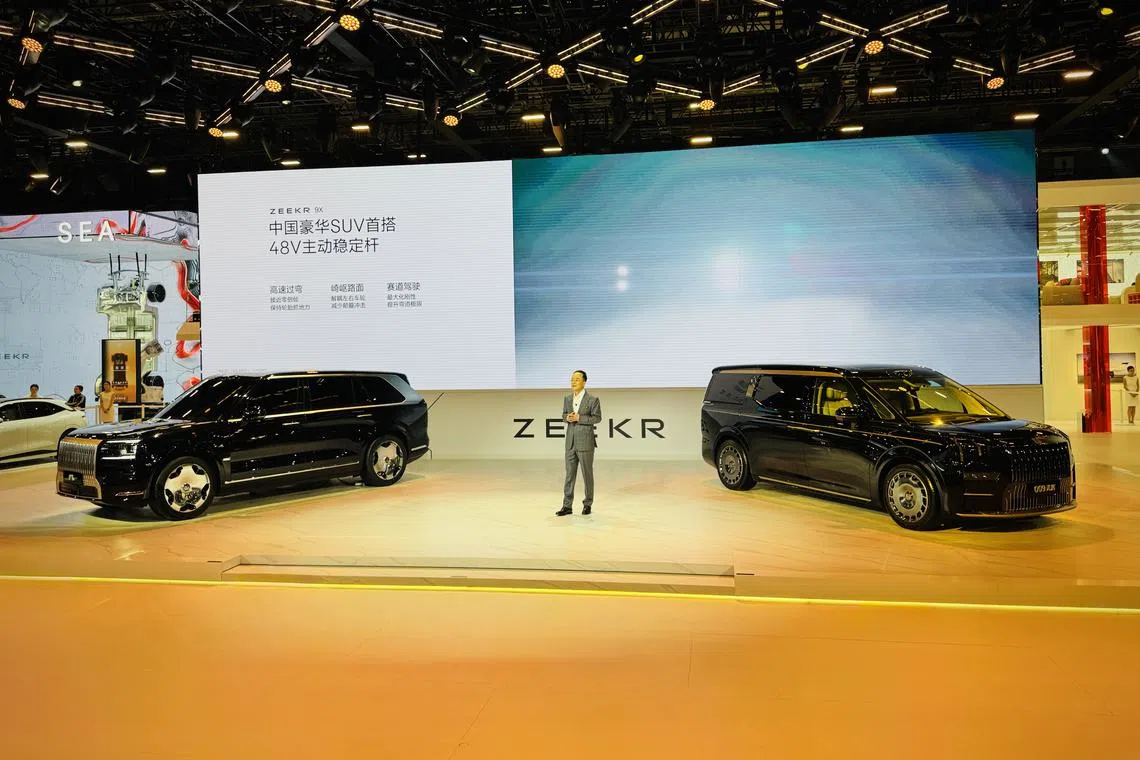
Ambition runs equally high at Zeekr, a four-year-old nameplate from the Geely group. While Avatr targets the mass-market electric vehicle crowd, Zeekr is pushing forcefully into the premium segment. At the show, its chief executive officer An Conghui presented two extremes of the brand’s luxury ambitions.
To his left stood an opulent reinterpretation of the Zeekr 009 Grand, a four-seat electric multi-purpose vehicle (MPV) fitted with a 43-inch rear screen and ornamented with at least 3 grams of 24-karat gold. BT estimates that if launched here, it could command a price near S$900,000 at today’s Certificate of Entitlement levels.
To An’s right was another bold statement, the 9X, a hybrid sport utility vehicle (SUV) of grand proportions that Chinese netizens have dubbed the country’s own Rolls-Royce Cullinan. The design team, led by former Bentley styling chief Stefan Sielaff, sees the comparison as apt. “I would even add one word,” Sielaff told a media gathering at a Zeekr conference a day before the show. “The word is ‘better’.”
With 885 horsepower from twin electric motors and a 0-100 kmh time of three seconds, the 9X leans heavily on performance, but is more striking for its physical presence. With its squared-off stance, huge upright grille and clean surfacing, it projects the sort of gravitas and authority that a car would need to take on Range Rovers or the Bentley Bentayga, which Sielaff had a hand in designing.
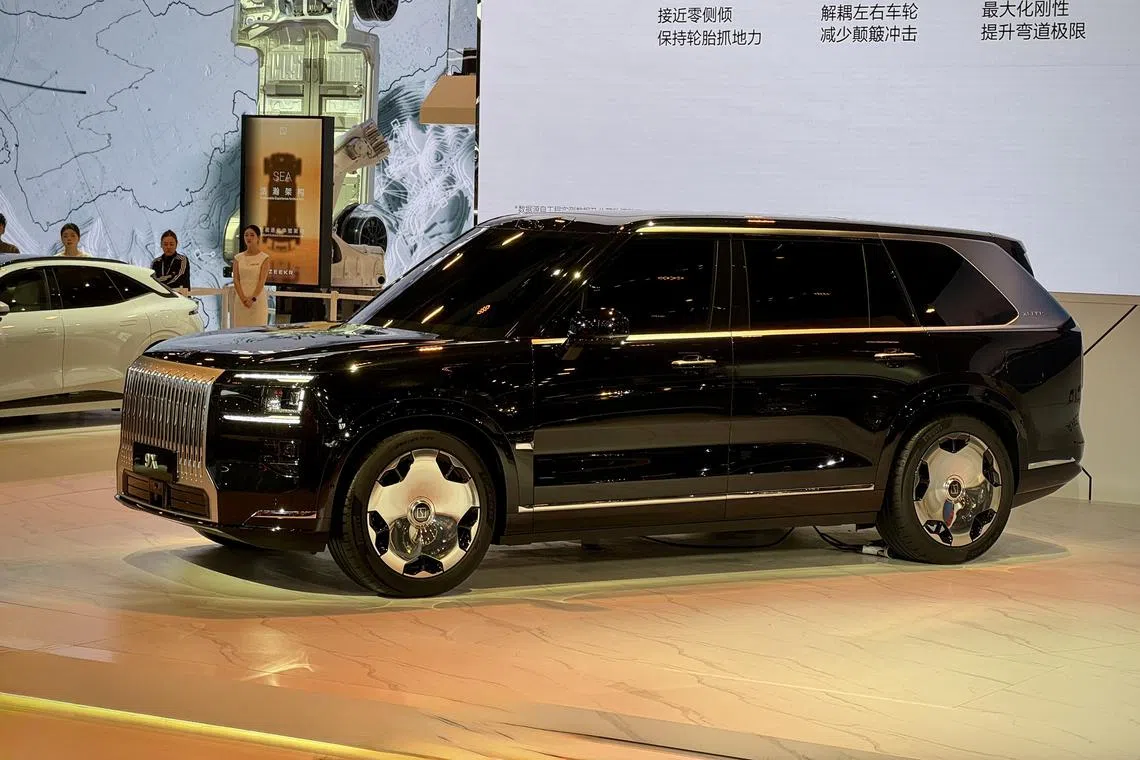
Above all, the yacht-inspired 9X telegraphs Zeekr’s intention to penetrate the luxury arena, where margins are fatter. That’s a space BYD also covets, having already become China’s runaway leader in the mass market for electric and hybrid cars.
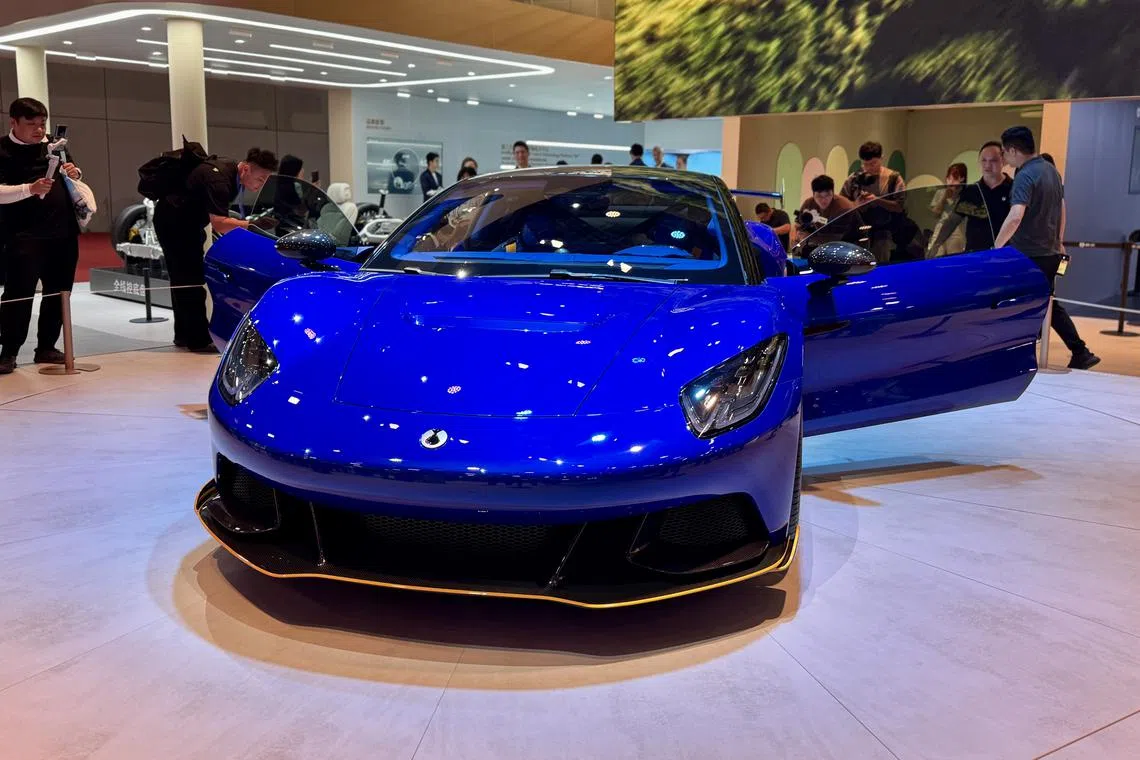
BYD used Shanghai to showcase its aspirations through Denza, its upmarket label. On display was the Denza Z, a low-slung, two-seat concept aimed squarely at Porsche’s 911. While Denza didn’t release details, the Z will likely follow the Chinese car industry playbook to a tee: deliver more performance and more tech at a lower price.
BYD’s even pricier Yangwang marque revealed the U8L, a stretched version of its technology-laden flagship SUV. While the basic U8’s ability to perform tank turns and float across rivers has earned it online fame, that hasn’t yet translated into volume. Yangwang only sold 524 cars in China during the first quarter of the year, showing that prestige can be a tricky business.
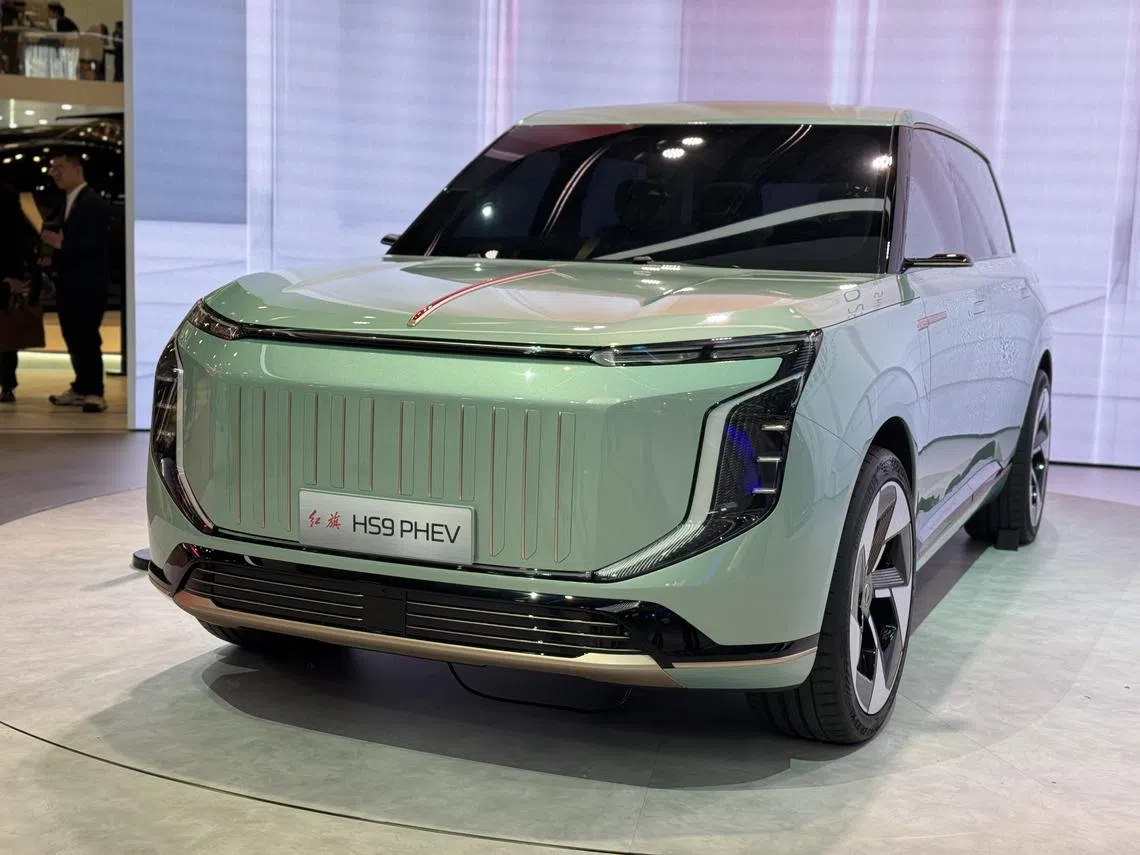
For now, the brand most closely aligned with traditional luxury values remains Hongqi, a nameplate that once symbolised Chinese pride by building cars for minister-level officials. Its styling is overseen by Giles Taylor, whose last job was head of design at Rolls-Royce, and its Shanghai line-up includes hybrid versions of the HS9 SUV and H9 sedan, along with the Guoya, a stately limousine aimed at the wealthy elite.
BT understands Hongqi is in final talks with a distributor here, and estimates its luxury models will start at around S$700,000, rising to S$1.4 million for the Guoya. Given the pricing, it would be wise for Hongqi to appoint a dealership with a database of customers who can afford Rolls-Royces.
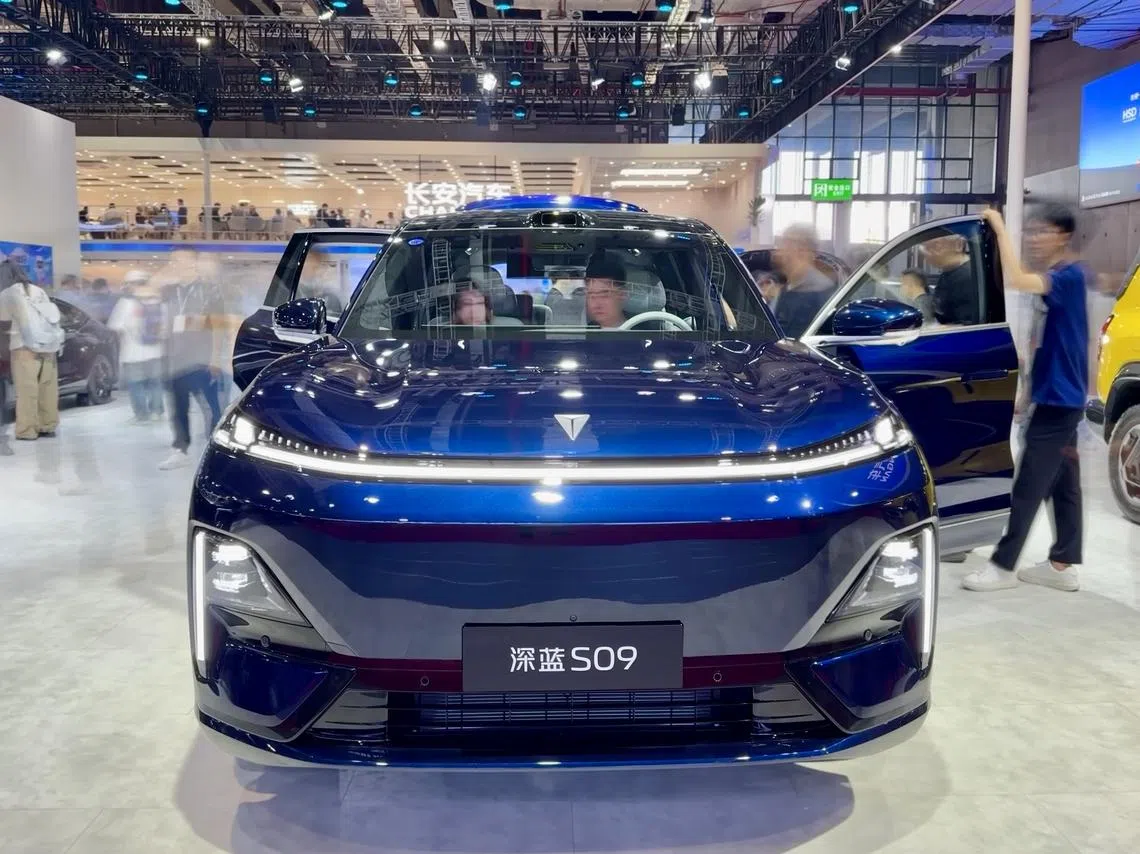
But sales volume keeps the lights on more than prestige, and Shanghai had its share of rising stars, such as Deepal, a newer brand under state-owned Changan that Premium Automobiles launched in Singapore in March.
It took Deepal 14 months to sell its first 100,000 cars, but it now comfortably moves more than 20,000 units a month. The company is using Shanghai as a chance to collect pre-launch sales of the upcoming S09, a six-seat SUV that starts from just under 240,000 yuan (S$43,234) in China, looking to build on momentum.
Leapmotor, a startup that appointed Cycle & Carriage its distributor in Singapore, is seeing similar sales growth. Its March tally in China was 37,095 cars, a 154.7 per cent year-on-year increase, enough to propel it to fifth place on domestic sales charts for “new energy” vehicles, meaning full electrics or plug-ins. Deepal, which only released its first car in 2022, broke into the top 10.
That kind of rapid ascent suggests that success isn’t built on nostalgia, but on carmakers’ ability to woo domestic buyers with a combination of efficiency, technology and style. If those attributes resonate overseas, legacy car companies will be studying Shanghai carefully, where all three are on full display.
Decoding Asia newsletter: your guide to navigating Asia in a new global order. Sign up here to get Decoding Asia newsletter. Delivered to your inbox. Free.
Copyright SPH Media. All rights reserved.

